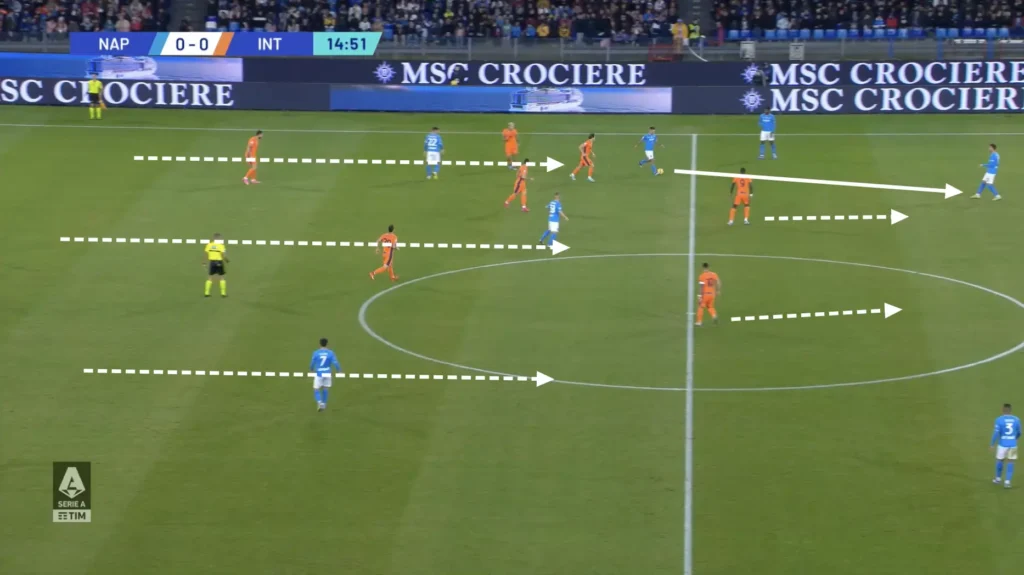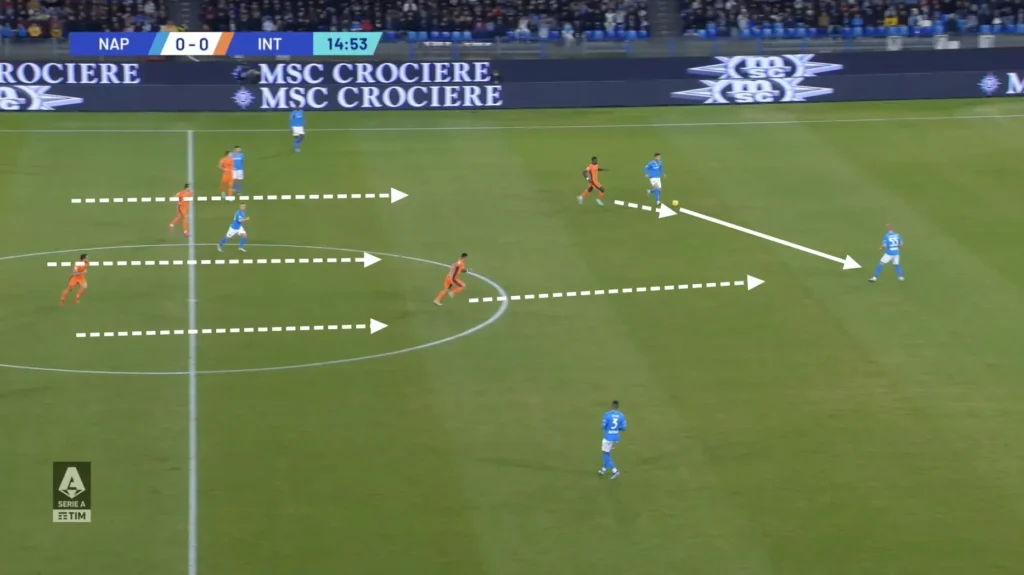In modern football, controlling space is as important as controlling the ball. One of the most effective ways to dominate the spatial battle is by squeezing the pitch — a concept that allows a team to make the playing area as small as possible for the opposition. When executed well, it increases defensive security, improves pressing efficiency, and creates a platform for quick attacking transitions.
This article explores what squeezing the pitch means, why teams use it, and how to implement it in both training and match play.
What Does “Squeezing the Pitch” Mean?
Squeezing the pitch refers to a team’s ability to reduce the playable space for the opposition by pushing its defensive and midfield lines higher up the field while maintaining short distances between units. The goal is to deny opponents time and space to build attacks, forcing them into rushed decisions, low-quality passes, or long clearances.
Instead of retreating and giving ground, the team compresses the field vertically, staying compact from back to front. The offside line moves closer to the halfway line, and the midfield and forward lines follow, maintaining cohesion.
This principle is dynamic: when the opponent plays a slow sideways pass or a back pass, the first line of pressure immediately pushes up. The rest of the team follows to maintain compactness. With each subsequent pass, the team steps forward even more, gradually forcing the opponent deeper and further away from dangerous areas.


In effect, squeezing the pitch allows a team to control where the game is played, keeping it as far from their own goal as possible while creating opportunities to regain possession in high-value areas.
Why Squeezing the Pitch Works
1. Reduces Space for Opponents
By keeping short distances between defenders, midfielders, and forwards, a team minimizes the gaps the opposition can exploit. Central passing lanes are closed, and attackers struggle to receive the ball facing goal. This forces opponents to play laterally or backward, slowing their build-up and limiting creative options. Tight spacing also allows defenders to support each other quickly if an opponent breaks through one line, maintaining defensive solidity.
2. Pushes the Opposition Back
When a team compresses the field effectively, the opposition has little choice but to retreat toward their own half or play long, often inaccurate passes. This keeps dangerous play away from the defending team’s goal and allows the pressing team to regain possession in advanced areas. Over time, repeated squeezing can push the opponent into uncomfortable positions, disrupting their rhythm and forcing them into predictable actions.
3. Creates a Psychological Advantage
A constantly compressed pitch puts pressure on the opponent mentally as well as physically. Players feel there is no space to operate, which can lead to rushed decisions, poor touches, and panicked clearances. Over the course of a match, this psychological strain reduces confidence and composure, making the opposition more error-prone and easier to dominate.
Key Principles of Squeezing the Pitch
To successfully squeeze the pitch, teams must adhere to a few fundamental principles:
- High Defensive Line: The backline must be willing to hold an aggressive position, often near the halfway line, to keep the team connected.
- Compact Vertical Distances: The space between each line (defense–midfield–attack) should remain short — ideally 10–15 meters.
- Trigger Recognition: Players must recognize pressing triggers such as a poor touch, a back pass, or a slow switch to collectively step up.
- Communication & Cohesion: The entire team must move as one unit. If one line pushes up and another stays deep, large exploitable spaces will appear.
Practical Methods for Squeezing the Pitch
Coordinated Pressing Movements
The press starts with the forwards, who act as the trigger for the team’s collective action. Often, this is initiated when the opponent plays a back pass or a sideways ball. Once the trigger is activated, midfielders step up to cut passing lanes, while the defensive line moves forward to compress space and reduce depth.
Defending on the Front Foot
All outfield players maintain an aggressive, forward-leaning posture, ready to step up and press. Midfielders, forwards, and defenders actively close passing lanes and challenge opponents quickly, preventing them from progressing the ball centrally. This collective positioning forces the opposition to play backward or wide while keeping the team compact.
Using the Offside Trap
A high line becomes more effective when combined with an offside strategy. Defenders step forward together as the ball is played backward or laterally, catching attackers offside and shrinking the playable area. Timing and coordination are critical, as a single misstep can open gaps behind the line.
Common Pitfalls
- Late or Uncoordinated Step-Up: If one defender holds the line while others push, gaps open for through balls.
- Lack of Pressure on the Ball: A high line is dangerous if there is no pressure on the passer, as it leaves space behind to exploit.
- Fatigue & Concentration: Maintaining compactness requires constant communication and mental focus. A lapse can be punished.
Applying Squeezing the Pitch in Matches
For coaches, implementing this approach requires gradual work. Start by training compactness in a low-block, then move to mid-block pressing, and eventually integrate a high line with collective step-ups. Players must build trust in each other’s positioning and timing.
At the elite level, many successful teams — from Pep Guardiola’s Manchester City to Luis Enrique’s PSG — use squeezing the pitch as a foundation for controlling matches. The concept works across levels of the game, provided the team is well-organized and physically prepared.
Conclusion
Squeezing the pitch is one of the most powerful tactical tools for controlling games. By keeping lines compact, stepping up collectively, and using coordinated pressing, teams can force opponents into mistakes, win possession higher up the field, and maintain territorial dominance.
For coaches and analysts, it’s a concept that requires attention to timing, player coordination, and constant communication — but when executed properly, it turns defending from a passive act into an active, proactive weapon.
